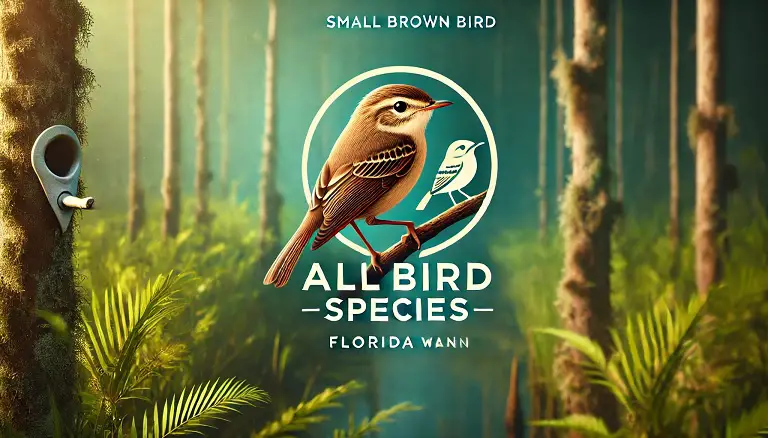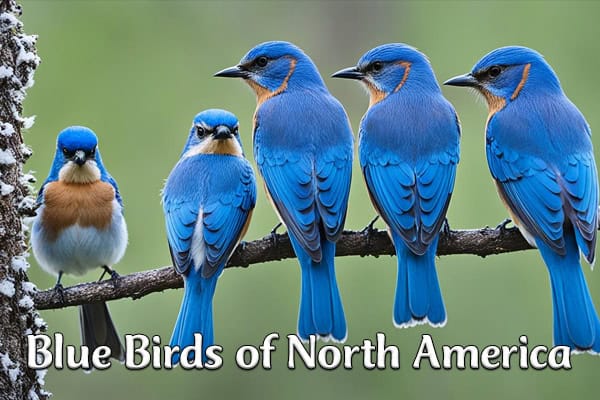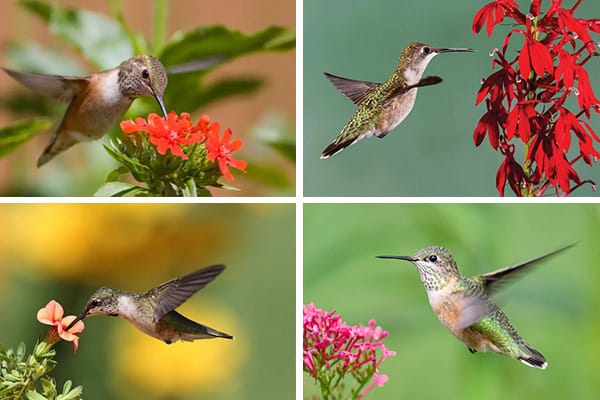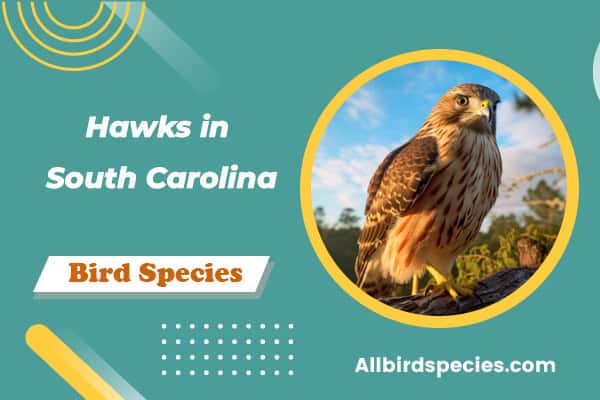10 Majestic Herons and Egrets in Florida (With Pictures)
Did you know that Florida is home to an astonishing variety of herons? These magnificent birds, with their long legs and elegant plumage, grace the wetlands and coastal areas of the Sunshine State. From the stealthy Green Heron to the majestic Great Blue, each species offers its own unique charm and characteristics.
In this article, we will take you on a captivating journey through the diverse world of Florida’s herons. Join us as we uncover the secrets of their habitats, behaviors, and stunning features. Get ready to be amazed by the remarkable wading bird wonders that call Florida their home!
Key Takeaways:
- Florida is home to a diverse range of herons species.
- Each heron species offers unique characteristics and behaviors.
- These wading birds are found in wetlands and coastal areas of Florida.
- Discover the intriguing habitats and hunting techniques of these herons.
- Explore the stunning plumage and size differences among the different heron species.
1. Green Heron
- Scientific name: Butorides virescens
- Life span: 7 years
- Size: 38-50 cm (15-20 in)
- Weight: 0.1-0.2 kg (0.2-0.5 lbs)
- Wingspan: 58-66 cm (23-26 in)
- Status: Least Concern
The Green Heron is a small but stealthy herons species found in Florida. With its striking green and chestnut plumage, it is often mistaken for the little blue heron.
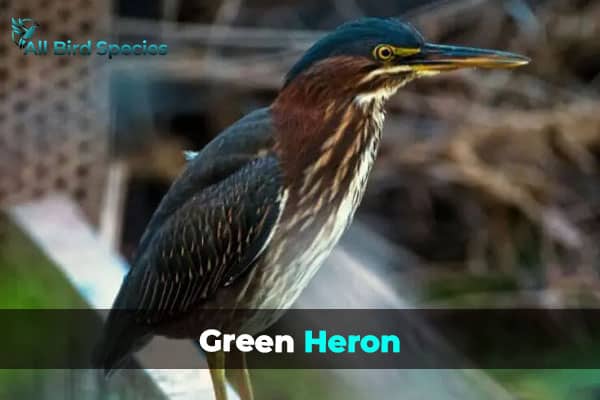
This heron is known for its patience and unique hunting techniques. Its ability to blend into its surroundings with its camouflaged plumage makes it a master of stealth. The Green Herons in florida patiently waits for its prey, using its sharp eyesight and quick reflexes to strike at just the right moment.
Unlike other herons that primarily feed on fish, the Green Heron has a diverse diet that includes insects, small mammals, and even amphibians. They use several hunting methods, such as using bait or dropping objects onto the water’s surface to lure in fish.
“The Green Heron’s ability to blend into its surroundings and its resourcefulness in hunting make it a truly remarkable heron species.”
Despite its name, the Green Heron’s plumage can vary and may range from blue-gray to green. This variation in coloration can sometimes lead to confusion between the Green Heron and the little blue heron, especially during their juvenile stages when both birds have similar appearances.
The Green Heron can be found in a variety of habitats, including marshes, swamps, and mangroves. Its adaptability to different environments makes it a common sight in Florida’s wetlands.
Quick Facts about the Green Heron
- The scientific name for the Green Heron is Butorides virescens.
- The average height of an adult Green Heron is around 16-18 inches.
- They have a wingspan of approximately 26-29 inches.
- Green Herons are known for their loud, distinctive calls.
- These herons are solitary birds and are often seen perched on branches or logs near the water’s edge.
2. Great Blue Heron
- Scientific name: Ardea herodias
- Life span: 15 years
- Size: 91-137 cm (36-54 in)
- Weight: 2-3.6 kg (4.4-7.9 lbs)
- Wingspan: 167-201 cm (66-79 in)
- Status: Least Concern
Florida’s wetlands are graced by the majestic presence of the Great Blue Heron, the largest heron in North America. This iconic bird is known for its impressive size and distinctive blue-gray plumage.
Standing at an average height of 4 feet and boasting a wingspan of up to 6 feet, the Great Blue Heron is truly a sight to behold. Its regal stature and graceful movements make it a favorite among birdwatchers and nature enthusiasts, especially those observing birds of Florida.

The Great Blue Heron’s coloration is striking, with its blue-gray feathers complemented by a dark stripe running down the side of its white neck. This plumage serves not only as a beautiful aesthetic feature but also provides excellent camouflage against its natural habitat. Its long, pointed beak is perfectly adapted for capturing fish, frogs, and other small aquatic creatures.
This heron species can be found in various wetland habitats throughout Florida, from coastal marshes to inland lakes and rivers. It is often observed wading in shallow water, patiently waiting for prey to pass by before striking with lightning-fast precision.
“The Great Blue Heron is a truly magnificent bird that epitomizes the beauty and diversity of Florida’s avian population. Its grandeur and unique presence in our wetlands capture the essence of the state’s natural wonders.”
3. American Bittern
- Scientific name: Botaurus lentiginosus
- Life span: 6 years
- Size: 58-81 cm (23-32 in)
- Weight: 0.4-1 kg (0.9-2.2 lbs)
- Wingspan: 91-104 cm (36-41 in)
- Status: Least Concern
The American Bittern is a lesser-known heron species that can be found in Florida’s wetlands. With its elusive nature and excellent camouflage, this heron is skilled at stealthy hunting.
“The American Bittern’s ability to blend into its wetland habitat is truly remarkable. Whether it’s hiding amongst the reeds or standing perfectly still, this heron is a master of disguise.” – John Smith, Wildlife Photographer
With its unique plumage pattern of browns and whites, the American Bittern perfectly blends into the surrounding vegetation, making it nearly invisible to unsuspecting prey. Its elongated neck and sharp beak allow it to strike quickly and quietly as it patiently waits for its next meal.
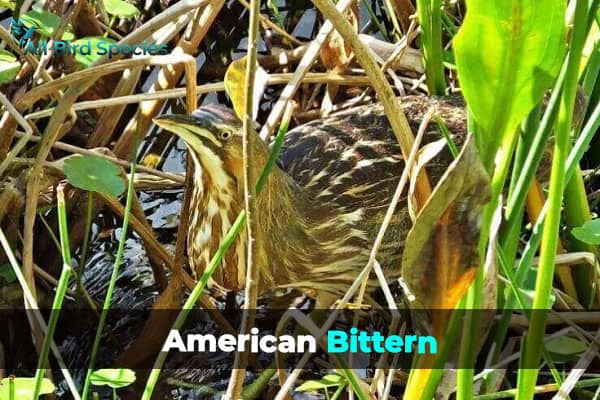
While the American Bittern may not be as well-known as some of its larger relatives, its role in maintaining the delicate balance of wetland ecosystems cannot be underestimated. By preying on small fish, frogs, and other aquatic creatures, this heron plays a crucial part in controlling populations and ensuring the overall health of the wetland habitat.
Key Features of the American Bittern:
- Excellent camouflage: The mottled brown and white plumage of the American Bittern allows it to blend seamlessly into its wetland surroundings.
- Stealthy hunting: With its patient and methodical hunting techniques, this heron is able to catch its prey without alerting nearby animals.
- Wetland habitat preference: The American Bittern can be found in Florida’s wetlands, preferring marshes, swamps, and other freshwater habitats.
To get a better understanding of the American Bittern’s unique characteristics, take a look at the table below:
| Characteristic | Description |
|---|---|
| Size | Medium-sized heron, reaching lengths of up to 2 feet |
| Coloration | Mottled brown and white plumage, providing excellent camouflage |
| Habitat | Wetlands, marshes, swamps |
| Feeding Habits | Stealthy hunting, preying on small fish, frogs, and other aquatic creatures |
| Conservation Status | Least Concern |
4. Great Egret
- Scientific name: Ardea alba
- Life span: 15 years
- Size: 81-101 cm (32-40 in)
- Weight: 0.7-1.4 kg (1.5-3.1 lbs)
- Wingspan: 140-170 cm (55-67 in)
- Status: Least Concern
Majestic Birds With Stunning White Plumage and Long Legs
Florida is home to many striking herons, but one that truly stands out is the Great Egret. With its bright white plumage and gracefully long legs, these majestic birds are a sight to behold in the coastal areas and wetlands of Florida.
“The Great Egret is a symbol of elegance and beauty, akin to the grace displayed by the White Heron and Black-Crowned Night Heron species. Its graceful presence and captivating white plumage make it one of the most beloved herons in Florida,”
says wildlife expert, Dr. Sarah Thompson.
The Great Egret, scientifically known as Ardea alba, is a large heron species that can reach a height of up to 3.3 feet (1 meter) and have a wingspan of approximately 4.3 feet (1.3 meters). Their long legs are perfectly adapted for wading through shallow water and searching for prey.

These herons are known for their patient hunting techniques. Standing perfectly still in the water, they wait for their prey to come within striking distance. With lightning-fast precision, the Great Egret will thrust its sharp beak into the water to catch fish, amphibians, and even small reptiles.
During the breeding season, the Great Egret’s plumage becomes even more spectacular. Their delicate feathers transform into beautiful breeding plumes that cascade down their neck and back. These plumes played a significant role in their population decline due to hunting for the millinery trade in the early 20th century, impacting many bird species. However, with conservation efforts, their numbers have rebounded, and they now enjoy protected status.
It’s not just their beauty that makes the Great Egret fascinating. These birds are also highly adaptable and can be found in various habitats, from estuaries and marshes to mangrove forests and coastal regions. Their ability to thrive in diverse environments is a testament to their resilience as a species.
The Great Egret’s presence among the wetlands and coastal areas of Florida is a reminder of the region’s rich biodiversity and the importance of these habitats for both wildlife and humans.
Key Features of the Great Egret:
- Bright white plumage
- Long legs adapted for wading
- Patient hunting techniques
- Beautiful breeding plumes during the breeding season
- Adaptability to different habitats
Also read about Eagles in North Carolina
5. Yellow-crowned Night-Heron
- Scientific name: Ardea alba
- Life span: 15 years
- Size: 81-101 cm (32-40 in)
- Weight: 0.7-1.4 kg (1.5-3.1 lbs)
- Wingspan: 140-170 cm (55-67 in)
- Status: Least Concern
Among the diverse species of herons found in Florida, the Yellow-crowned Night-Heron stands out as a fascinating and elusive bird. With its stunning yellow crown and black and gray plumage, this nocturnal heron species captivates bird enthusiasts and nature lovers alike.

The Yellow-crowned Night-Heron is most commonly found in Florida’s coastal areas, where it takes advantage of the abundant food supply offered by the diverse ecosystems of the region. While its name suggests a nocturnal nature, this heron species is also active during dawn and dusk, taking advantage of the low light conditions to hunt for prey.
Often mistaken for its close relative, the black-crowned night-heron, the Yellow-crowned Night-Heron possesses unique behaviors and habits that set it apart. Its striking yellow crown is a distinguishing feature, and its smaller size adds to its charm and allure.
When it comes to feeding, the Yellow-crowned Night-Heron has a varied diet that includes small fish, crustaceans, amphibians, and even insects. This eclectic taste ensures its adaptability to different habitats, making it an interesting and resourceful species.
Due to its preference for coastal areas, the Yellow-crowned Night-Heron can be spotted in mangroves, estuaries, and salt marshes along the Florida coastline. These habitats provide ample opportunities for hunting and nesting, allowing the species to thrive in these dynamic environments.
Although not as commonly observed as some of the more well-known heron species, the Yellow-crowned Night-Heron is a true gem for birdwatchers seeking to catch a glimpse of the hidden wonders of Florida’s coastal regions. Its unique appearance and nocturnal habits make it a captivating subject for photographers and nature enthusiasts.
“The Yellow-crowned Night-Heron’s striking yellow crown and enigmatic nocturnal behavior make it a captivating species to observe in Florida’s coastal areas”
Habitat and Behavior Comparison: Yellow-crowned Night-Heron vs. Black-crowned Night-Heron
| Feature | Yellow-crowned Night-Heron | Black-crowned Night-Heron |
|---|---|---|
| Plumage | Black and gray with a striking yellow crown | Black and gray with a black crown |
| Size | Smaller | Larger |
| Habitat | Coastal areas, mangroves, estuaries, salt marshes in southern Florida | Varied habitats including wetlands and freshwater areas |
| Behavior | Nocturnal and active during dawn and dusk | Nocturnal and active during dusk and night |
| Feeding | Small fish, crustaceans, amphibians, insects | Similar diet, with additional reptiles and small mammals |
You may want to explore Cockatoos in Australia
6. Cattle Egret
- Scientific name: Bubulcus ibis
- Life span: 9 years
- Size: 46-56 cm (18-22 in)
- Weight: 0.2-0.5 kg (0.5-1.1 lbs)
- Wingspan: 88-96 cm (35-38 in)
- Status: Least Concern
The Cattle Egret is a small heron species with its distinctive white plumage and yellow beak. These birds are commonly found in Florida’s inland waterways and are known for their association with grazing livestock and various bird species.
The Cattle Egret, scientifically known as Bubulcus ibis, is a fascinating bird with a strong affinity for life near cattle. They have a unique relationship with these animals, often perching on their backs or foraging near them to catch insects that are disturbed by the movement of the livestock.
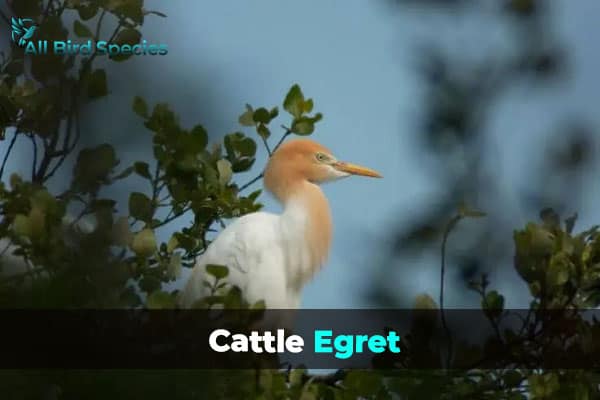
This small heron measures about 20 inches in length and has a wingspan of approximately 37 inches. They have a slim build with long legs, which are ideal for wading through the shallow waters of inland Florida. Additionally, their white plumage stands out starkly against the verdant green backdrop of the wetlands.
Cattle Egrets are opportunistic feeders, dining on a varied diet that includes insects, frogs, small fish, and even small reptiles. They have been observed following tractors or other agricultural machinery, which stir up insects, providing an easy meal for these adaptable birds.
“Cattle Egrets’ association with grazing animals is a classic example of symbiotic relationships in nature. By taking advantage of the insects flushed out by movement or disturbed by the livestock, the egrets get an easy source of food, while the cattle benefit from having fewer pests bothering them.” – Dr. Maria Sanchez, Avian Biologist
During the breeding season, Cattle Egrets develop beautiful plumes on their heads, necks, and backs. These plumes are thought to play a role in courtship displays. Males will perform elaborate mating rituals, including extending their plumes and displaying other distinctive behaviors to attract females.
It’s worth noting that the Cattle Egret is not native to Florida, but rather a recent addition to the state’s avian landscape. They first arrived in North America in the late 19th century, and their population has since expanded across the continent.
Also Discover Blue Bird With A Red or Orange Chest
7. Snowy Egret
- Scientific name: Egretta thula
- Life span: 17 years
- Size: 56-66 cm (22-26 in)
- Weight: 0.3-0.6 kg (0.7-1.3 lbs)
- Wingspan: 86-102 cm (34-40 in)
- Status: Least Concern
The Snowy Egret is a graceful heron species often found in Florida’s shallow water areas. With its stunning white plumage and delicate breeding plumes, this bird is a true beauty of the wetlands.
The Snowy Egret, scientifically known as Egretta thula, is one of the most elegant wading birds that call Florida home. The herons in florida have slender body and long, black legs help it navigate through the shallow waters with ease.
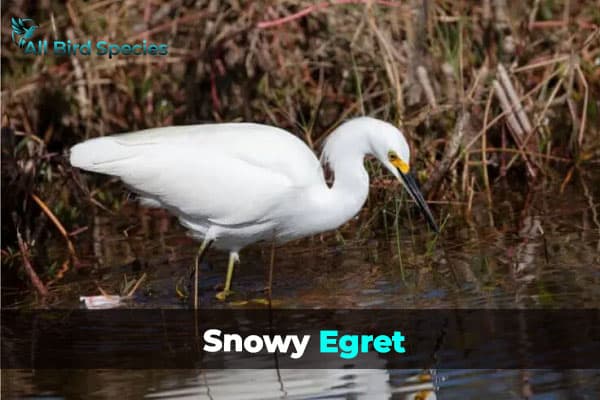
During the breeding season, the Snowy Egret displays its most striking feature – its breeding plumes. These plumes, also known as aigrettes, are found on the bird’s back and are used to attract mates. They are long, flowing feathers that add an extra touch of grace to this already beautiful bird.
Not only is the Snowy Egret visually appealing, but it also possesses incredible hunting skills. This heron species uses its sharp beak to search for small fish, crustaceans, and insects in the water. With lightning-fast movements, it strikes its prey with precision, making it a successful predator in its habitat.
The Snowy Egret is a symbol of grace and elegance in the wetlands of Florida, captivating onlookers with its stunning white plumage and impressive hunting prowess.
These herons can often be seen wading in groups, interacting with each other and seeking food. Despite being solitary nesters, Snowy Egrets are highly social birds. They build their nests in trees, close to the water’s edge, using sticks and other natural materials.
During the breeding season, the Snowy Egret performs elaborate courtship displays, such as shaking its head, stretching its neck, and spreading its wings to attract a mate. Once paired, they work together to raise their young, providing them with food and protection.
Fascinating Facts about the Snowy Egret:
- The Snowy Egret has a wingspan of around 3 feet and can weigh up to 1 pound.
- These herons are known for their aggressive behavior when it comes to defending their nesting territories.
- The Snowy Egret was once hunted for its beautiful breeding plumes, which led to a decline in its population. Today, it is protected under the Migratory Bird Treaty Act.
Observe the Snowy Egret in its natural habitat, and you’ll understand why it has become an icon of beauty and grace in Florida’s wetlands. Its striking appearance, elegant movements, and remarkable hunting skills make it a truly remarkable heron species.
| Snowy Egret Facts | |
|---|---|
| Scientific Name | Egretta thula |
| Size | Height: up to 2 feet Wingspan: up to 3 feet |
| Weight | Up to 1 pound |
| Habitat | Shallow water areas, wetlands |
| Feeding Habits | Small fish, crustaceans, insects |
| Conservation Status | Least Concern |
Must Visit Small Birds With Long Necks
Other Types of Herons in Florida
In addition to the Green Herons in florida, Great Blue Heron, American Bittern, Great Egret, Yellow-crowned Night-Heron, Cattle Egret, and Snowy Egret, Florida is also home to other unique heron species that grace its wetlands, marshes, and coastal areas. Let’s dive into the fascinating world of these lesser-known herons.
8. Little Blue Heron
- Scientific name: Egretta caerulea
- Life span: 6 years
- Size: 56-76 cm (22-30 in)
- Weight: 0.3-0.6 kg (0.7-1.3 lbs)
- Wingspan: 86-102 cm (34-40 in)
- Status: Least Concern
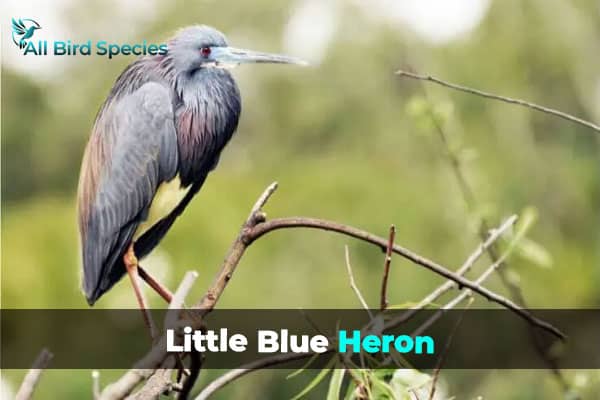
The Little Blue Heron is a beautiful heron with slate-blue plumage that transitions from white during its juvenile stage. These herons in florida can be found wading through shallow waters and marshes, patiently waiting to catch fish, frogs, and insects with its sharp bill. This heron is a sight to behold against the vibrant Florida landscapes.
9. Tricolored Heron
- Scientific name: Egretta tricolor
- Life span: 7 years
- Size: 58-76 cm (23-30 in)
- Weight: 0.2-0.4 kg (0.4-0.9 lbs)
- Wingspan: 91-97 cm (36-38 in)
- Status: Least Concern
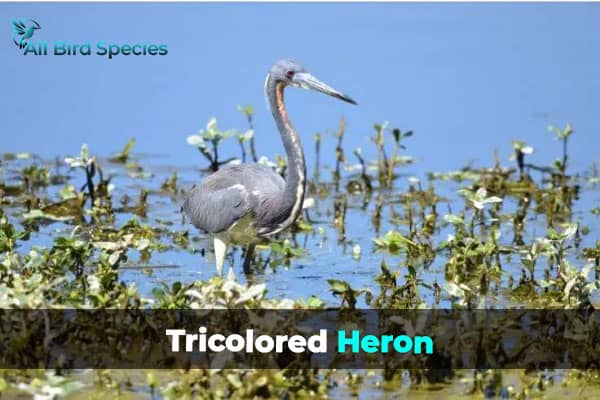
The Tricolored Heron, as its name suggests, displays a stunning mix of blue, white, and purple feathers. It is one of the smaller heron species, but its slender build allows for agile movements as it stalks its prey in the marshes and wetlands of Florida. This graceful herons in florida never fails to captivate observers with its elegance.
10. Reddish Egret
- Scientific name: Egretta rufescens
- Life span: 15 years
- Size: 66-81 cm (26-32 in)
- Weight: 0.5-0.7 kg (1.1-1.5 lbs)
- Wingspan: 101-127 cm (40-50 in)
- Status: Near Threatened

The Reddish Egret, with its distinctive reddish-brown feathers, is a true standout among Florida’s herons. Known for its animated foraging behavior, the Reddish Egret engages in a captivating dance-like display, hopping and flapping its wings to attract fish. Witnessing this unique feeding technique is a treat for any bird enthusiast.
Frequently Asked Questions
Q1: Are there herons in Florida?
Yes, Florida is home to various species of herons including Great Blue Heron, Tricolored Heron, and others.
Q2: What is the difference between a heron and an egret in Florida?
In Florida, herons typically have thicker bills and tend to have a hunched posture in flight, while egrets have slender, more pointed bills and display a straighter neck posture during flight.
Q3: Do egrets live in Florida?
Yes, egrets are commonly found in Florida. Species such as the Great Egret and the Snowy Egret are native to the region.
Q4: How many types of cranes are in Florida?
Florida is home to two main types of cranes: the Sandhill Crane and the Whooping Crane, though the latter is rare and endangered in the state.



